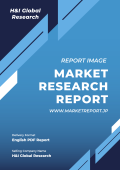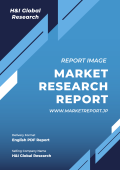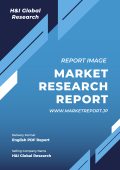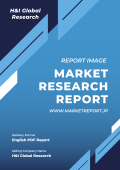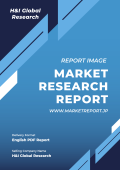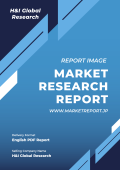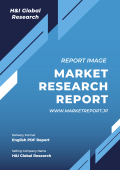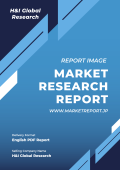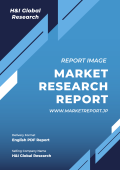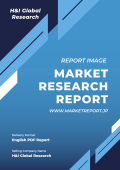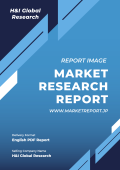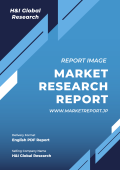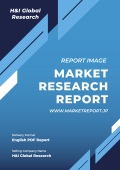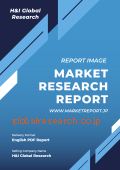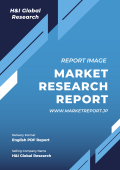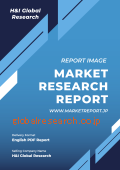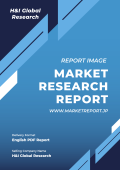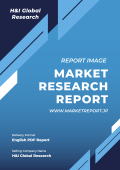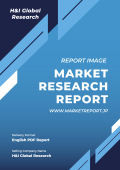| ■ 英語タイトル:Quantum Dots Market: Global Industry Trends, Share, Size, Growth, Opportunity and Forecast 2023-2028
|
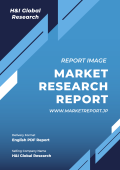 | ■ 発行会社/調査会社:IMARC
■ 商品コード:IMARC23JLY223
■ 発行日:2023年7月
■ 調査対象地域:グローバル
■ 産業分野:電子&半導体
■ ページ数:143
■ レポート言語:英語
■ レポート形式:PDF
■ 納品方式:Eメール
|
■ 販売価格オプション
(消費税別)
※販売価格オプションの説明はこちらで、ご購入に関する詳細案内はご利用ガイドでご確認いただけます。
※お支払金額は「換算金額(日本円)+消費税+配送料(Eメール納品は無料)」です。
※Eメールによる納品の場合、通常ご注文当日~2日以内に納品致します。
※レポート納品後、納品日+5日以内に請求書を発行・送付致します。(請求書発行日より2ヶ月以内の銀行振込条件、カード払いも可能)
※IMARC社の概要及び新刊レポートはこちらでご確認いただけます。
*** レポート概要(サマリー)***IMARC社は、2022年65億ドルであった世界の量子ドット市場規模が、予測期間中(2023年~2028年)年平均23.4%成長し、2028年には254億ドルに達すると予測しています。当調査資料では、量子ドットの世界市場を調査・分析し、序論、範囲・調査手法、エグゼクティブサマリー、イントロダクション、処理技術別(コロイド合成、ファブリケーション、生体分子自己組織化、ウイルス集合体、その他)分析、用途別(医療機器、ディスプレイ、太陽電池、光検出器センサー、その他)分析、材料別(カドミウムベースQD、カドミウムフリーQD)分析、産業別(医療、オプトエレクトロニクス、LED照明、太陽電池モジュール、その他)分析、地域別(北米、アジア太平洋、ヨーロッパ、中南米、中東/アフリカ)分析、SWOT分析、バリューチェーン分析、ファイブフォース分析、価格分析、競争状況などの項目を掲載しています。なお、当市場の主要企業には、Altairnano、ams-OSRAM International GmbH、LG Display Co. Ltd、Nanoco Group plc.、Nanosys Inc.、Ocean NanoTech LLC、QD Laser、Quantum Materials Corp.、Samsung Display Co. Ltd. (Samsung Electronics Co. Ltd) などが含まれています。
・序論
・範囲・調査手法
・エグゼクティブサマリー
・イントロダクション
・世界の量子ドット市場規模:処理技術別
- コロイド合成技術の市場規模
- ファブリケーション技術の市場規模
- 生体分子自己組織化技術の市場規模
- ウイルス集合体技術の市場規模
- その他技術の市場規模
・世界の量子ドット市場規模:用途別
- 医療機器における市場規模
- ディスプレイにおける市場規模
- 太陽電池における市場規模
- 光検出器センサーにおける市場規模
- その他における市場規模
・世界の量子ドット市場規模:材料別
- カドミウムベースQDの市場規模
- カドミウムフリーQDの市場規模
・世界の量子ドット市場規模:産業別
- 医療における市場規模
- オプトエレクトロニクスにおける市場規模
- LED照明における市場規模
- 太陽電池モジュールにおける市場規模
- その他産業における市場規模
・世界の量子ドット市場規模:地域別
- 北米の量子ドット市場規模
- アジア太平洋の量子ドット市場規模
- ヨーロッパの量子ドット市場規模
- 中南米の量子ドット市場規模
- 中東/アフリカの量子ドット市場規模
・SWOT分析
・バリューチェーン分析
・ファイブフォース分析
・価格分析
・競争状況 |
Market Overview:
The global quantum dots market size reached US$ 6.5 Billion in 2022. Looking forward, IMARC Group expects the market to reach US$ 25.4 Billion by 2028, exhibiting a growth rate (CAGR) of 23.4% during 2023-2028.
Quantum dots, also known as QDs or fluorescent semiconductor nanocrystals, are tiny structures that emit light in only one color, which is determined by their shape and size. They have broad absorption spectra; massive Stokes shift; high quantum yield, photostability and molar extinction coefficients; and their emission wavelengths span from the ultraviolet (UV) to the infrared (IR) range. QDs have gradually replaced the conventional fluorophores, with their increasing usage in microarrays, immunoassays, fluorescence imaging, targeted drug delivery and therapy. QD-based materials have a longer life, purer colors, and lower manufacturing cost and power consumption as compared to organic luminescent materials, thus enabling manufacturers to produce next-generation displays affordably and efficiently.
Quantum dot solar cells (QDSC) convert the sun’s energy into electricity, thereby increasing the amount of electricity produced by the solar cells. This aids in the production of solar energy in a cost-effective manner while reducing the amount of wasteful heat generated in the process. Moreover, the size and composition of tiny, semiconducting quantum dots make them suitable for a wide variety of applications. For instance, in the medical sector, these nanoparticles are used for different biomedical applications, including medical imaging and biosensors. Besides this, quantum dots also enable researchers to study cell processes and improve the diagnosis and treatment of chronic diseases such as cancer. The ongoing research on the usage of quantum dots in displays, ranging from small to large television screens, which would consume less power than that is used in current displays, is also driving the market growth. Researchers are also dedicating resources for finding efficient and universal methods for the synthesis of Graphene Quantum Dots (GQDs) with high stability, tunable PL emission wavelength and controllable surface properties. Furthermore, QDs have gained immense popularity as their integration with various nanomaterials, such as noble metal nanoparticles, carbon allotropes, upconversion nanoparticles (UCNPs), metal oxides and metal-organic frameworks (MOFs) has provided new opportunities and possibilities in the fields of nanoscience and nanotechnology.
Key Market Segmentation:
IMARC Group provides an analysis of the key trends in each sub-segment of the global quantum dots market report, along with forecasts at the global, regional and country level from 2023-2028. Our report has categorized the market based on processing techniques, application, material and end-use industry.
Breakup by Processing Techniques:
Colloidal Synthesis
Fabrication
Lithography
Electron Beam Lithography
Soft Lithography
Stencil Lithography
Nanolithography
Photopatternable Arrays
Bio-Molecular Self-Assembly
Viral Assembly
Electrochemical Assembly
Others
Breakup by Application:
Medical Devices
Displays
Solar Cells
Photodetectors Sensors
Lasers
LED Lights
Batteries & Energy Storage Systems
Transistors
Others
Breakup by Material:
Cadmium Based QD
Cadmium Selenide
Cadmium Sulfide
Cadmium Telluride
Cadmium Free QD
Indium Arsenide
Silicon
Graphene
Lead Sulfide
Breakup by End-Use Industry:
Healthcare
Optoelectronics
LED Lighting
Solar Modules
Others
Breakup by Region:
North America
United States
Canada
Asia Pacific
China
Japan
India
South Korea
Australia
Indonesia
Others
Europe
Germany
France
United Kingdom
Italy
Spain
Russia
Others
Latin America
Brazil
Mexico
Argentina
Colombia
Chile
Peru
Others
Middle East and Africa
Turkey
Saudi Arabia
Iran
United Arab Emirates
Others
Competitive Landscape:
The report has also analysed the competitive landscape of the market with some of the key players being Altairnano, ams-OSRAM International GmbH, LG Display Co. Ltd, Nanoco Group plc., Nanosys Inc., Ocean NanoTech LLC, QD Laser, Quantum Materials Corp., Samsung Display Co. Ltd. (Samsung Electronics Co. Ltd) and Thermo Fisher Scientific Inc.
Key Questions Answered in This Report
1. What was the size of the global quantum dots market in 2022?
2. What is the expected growth rate of the global quantum dots market during 2023-2028?
3. What are the key factors driving the global quantum dots market?
4. What has been the impact of COVID-19 on the global quantum dots market?
5. What is the breakup of the global quantum dots market based on the processing techniques?
6. What is the breakup of the global quantum dots market based on the application?
7. What is the breakup of the global quantum dots market based on the material?
8. What is the breakup of the global quantum dots market based on the end-use industry?
9. What are the key regions in the global quantum dots market?
10. Who are the key players/companies in the global quantum dots market?
Market Overview:
The global quantum dots market size reached US$ 6.5 Billion in 2022. Looking forward, IMARC Group expects the market to reach US$ 25.4 Billion by 2028, exhibiting a growth rate (CAGR) of 23.4% during 2023-2028.
Quantum dots, also known as QDs or fluorescent semiconductor nanocrystals, are tiny structures that emit light in only one color, which is determined by their shape and size. They have broad absorption spectra; massive Stokes shift; high quantum yield, photostability and molar extinction coefficients; and their emission wavelengths span from the ultraviolet (UV) to the infrared (IR) range. QDs have gradually replaced the conventional fluorophores, with their increasing usage in microarrays, immunoassays, fluorescence imaging, targeted drug delivery and therapy. QD-based materials have a longer life, purer colors, and lower manufacturing cost and power consumption as compared to organic luminescent materials, thus enabling manufacturers to produce next-generation displays affordably and efficiently.
Quantum dot solar cells (QDSC) convert the sun’s energy into electricity, thereby increasing the amount of electricity produced by the solar cells. This aids in the production of solar energy in a cost-effective manner while reducing the amount of wasteful heat generated in the process. Moreover, the size and composition of tiny, semiconducting quantum dots make them suitable for a wide variety of applications. For instance, in the medical sector, these nanoparticles are used for different biomedical applications, including medical imaging and biosensors. Besides this, quantum dots also enable researchers to study cell processes and improve the diagnosis and treatment of chronic diseases such as cancer. The ongoing research on the usage of quantum dots in displays, ranging from small to large television screens, which would consume less power than that is used in current displays, is also driving the market growth. Researchers are also dedicating resources for finding efficient and universal methods for the synthesis of Graphene Quantum Dots (GQDs) with high stability, tunable PL emission wavelength and controllable surface properties. Furthermore, QDs have gained immense popularity as their integration with various nanomaterials, such as noble metal nanoparticles, carbon allotropes, upconversion nanoparticles (UCNPs), metal oxides and metal-organic frameworks (MOFs) has provided new opportunities and possibilities in the fields of nanoscience and nanotechnology.
Key Market Segmentation:
IMARC Group provides an analysis of the key trends in each sub-segment of the global quantum dots market report, along with forecasts at the global, regional and country level from 2023-2028. Our report has categorized the market based on processing techniques, application, material and end-use industry.
Breakup by Processing Techniques:
Colloidal Synthesis
Fabrication
Lithography
Electron Beam Lithography
Soft Lithography
Stencil Lithography
Nanolithography
Photopatternable Arrays
Bio-Molecular Self-Assembly
Viral Assembly
Electrochemical Assembly
Others
Breakup by Application:
Medical Devices
Displays
Solar Cells
Photodetectors Sensors
Lasers
LED Lights
Batteries & Energy Storage Systems
Transistors
Others
Breakup by Material:
Cadmium Based QD
Cadmium Selenide
Cadmium Sulfide
Cadmium Telluride
Cadmium Free QD
Indium Arsenide
Silicon
Graphene
Lead Sulfide
Breakup by End-Use Industry:
Healthcare
Optoelectronics
LED Lighting
Solar Modules
Others
Breakup by Region:
North America
United States
Canada
Asia Pacific
China
Japan
India
South Korea
Australia
Indonesia
Others
Europe
Germany
France
United Kingdom
Italy
Spain
Russia
Others
Latin America
Brazil
Mexico
Argentina
Colombia
Chile
Peru
Others
Middle East and Africa
Turkey
Saudi Arabia
Iran
United Arab Emirates
Others
Competitive Landscape:
The report has also analysed the competitive landscape of the market with some of the key players being Altairnano, ams-OSRAM International GmbH, LG Display Co. Ltd, Nanoco Group plc., Nanosys Inc., Ocean NanoTech LLC, QD Laser, Quantum Materials Corp., Samsung Display Co. Ltd. (Samsung Electronics Co. Ltd) and Thermo Fisher Scientific Inc.
Key Questions Answered in This Report
1. What was the size of the global quantum dots market in 2022?
2. What is the expected growth rate of the global quantum dots market during 2023-2028?
3. What are the key factors driving the global quantum dots market?
4. What has been the impact of COVID-19 on the global quantum dots market?
5. What is the breakup of the global quantum dots market based on the processing techniques?
6. What is the breakup of the global quantum dots market based on the application?
7. What is the breakup of the global quantum dots market based on the material?
8. What is the breakup of the global quantum dots market based on the end-use industry?
9. What are the key regions in the global quantum dots market?
10. Who are the key players/companies in the global quantum dots market?
Figure 1: Global: Quantum Dots Market: Major Drivers and Challenges
Figure 2: Global: Quantum Dots Market: Sales Value (in Billion US$), 2017-2022
Figure 3: Global: Quantum Dots Market: Breakup by Processing Techniques (in %), 2022
Figure 4: Global: Quantum Dots Market: Breakup by Application (in %), 2022
Figure 5: Global: Quantum Dots Market: Breakup by Material (in %), 2022
Figure 6: Global: Quantum Dots Market: Breakup by End-Use Industry (in %), 2022
Figure 7: Global: Quantum Dots Market: Breakup by Region (in %), 2022
Figure 8: Global: Quantum Dots Market Forecast: Sales Value (in Billion US$), 2023-2028
Figure 9: Global: Quantum Dots (Colloidal Synthesis) Market: Sales Value (in Million US$), 2017 & 2022
Figure 10: Global: Quantum Dots (Colloidal Synthesis) Market Forecast: Sales Value (in Million US$), 2023-2028
Figure 11: Global: Quantum Dots (Fabrication) Market: Sales Value (in Million US$), 2017 & 2022
Figure 12: Global: Quantum Dots (Fabrication) Market Forecast: Sales Value (in Million US$), 2023-2028
Figure 13: Global: Quantum Dots (Bio-Molecular Self-Assembly) Market: Sales Value (in Million US$), 2017 & 2022
Figure 14: Global: Quantum Dots (Bio-Molecular Self-Assembly) Market Forecast: Sales Value (in Million US$), 2023-2028
Figure 15: Global: Quantum Dots (Viral Assembly) Market: Sales Value (in Million US$), 2017 & 2022
Figure 16: Global: Quantum Dots (Viral Assembly) Market Forecast: Sales Value (in Million US$), 2023-2028
Figure 17: Global: Quantum Dots (Electrochemical Assembly) Market: Sales Value (in Million US$), 2017 & 2022
Figure 18: Global: Quantum Dots (Electrochemical Assembly) Market Forecast: Sales Value (in Million US$), 2023-2028
Figure 19: Global: Quantum Dots (Others) Market: Sales Value (in Million US$), 2017 & 2022
Figure 20: Global: Quantum Dots (Others) Market Forecast: Sales Value (in Million US$), 2023-2028
Figure 21: Global: Quantum Dots (Medical Devices) Market: Sales Value (in Million US$), 2017 & 2022
Figure 22: Global: Quantum Dots (Medical Devices) Market Forecast: Sales Value (in Million US$), 2023-2028
Figure 23: Global: Quantum Dots (Displays) Market: Sales Value (in Million US$), 2017 & 2022
Figure 24: Global: Quantum Dots (Displays) Market Forecast: Sales Value (in Million US$), 2023-2028
Figure 25: Global: Quantum Dots (Solar Cells) Market: Sales Value (in Million US$), 2017 & 2022
Figure 26: Global: Quantum Dots (Solar Cells) Market Forecast: Sales Value (in Million US$), 2023-2028
Figure 27: Global: Quantum Dots (Photodetectors Sensors) Market: Sales Value (in Million US$), 2017 & 2022
Figure 28: Global: Quantum Dots (Photodetectors Sensors) Market Forecast: Sales Value (in Million US$), 2023-2028
Figure 29: Global: Quantum Dots (Lasers) Market: Sales Value (in Million US$), 2017 & 2022
Figure 30: Global: Quantum Dots (Lasers) Market Forecast: Sales Value (in Million US$), 2023-2028
Figure 31: Global: Quantum Dots (LED Lights) Market: Sales Value (in Million US$), 2017 & 2022
Figure 32: Global: Quantum Dots (LED Lights) Market Forecast: Sales Value (in Million US$), 2023-2028
Figure 33: Global: Quantum Dots (Batteries & Energy Storage Systems) Market: Sales Value (in Million US$), 2017 & 2022
Figure 34: Global: Quantum Dots (Batteries & Energy Storage Systems) Market Forecast: Sales Value (in Million US$), 2023-2028
Figure 35: Global: Quantum Dots (Transistors) Market: Sales Value (in Million US$), 2017 & 2022
Figure 36: Global: Quantum Dots (Transistors) Market Forecast: Sales Value (in Million US$), 2023-2028
Figure 37: Global: Quantum Dots (Others) Market: Sales Value (in Million US$), 2017 & 2022
Figure 38: Global: Quantum Dots (Others) Market Forecast: Sales Value (in Million US$), 2023-2028
Figure 39: Global: Quantum Dots (Cadmium Based QD) Market: Sales Value (in Million US$), 2017 & 2022
Figure 40: Global: Quantum Dots (Cadmium Based QD) Market Forecast: Sales Value (in Million US$), 2023-2028
Figure 41: Global: Quantum Dots (Cadmium Free QD) Market: Sales Value (in Million US$), 2017 & 2022
Figure 42: Global: Quantum Dots (Cadmium Free QD) Market Forecast: Sales Value (in Million US$), 2023-2028
Figure 43: Global: Quantum Dots (Healthcare) Market: Sales Value (in Million US$), 2017 & 2022
Figure 44: Global: Quantum Dots (Healthcare) Market Forecast: Sales Value (in Million US$), 2023-2028
Figure 45: Global: Quantum Dots (Optoelectronics) Market: Sales Value (in Million US$), 2017 & 2022
Figure 46: Global: Quantum Dots (Optoelectronics) Market Forecast: Sales Value (in Million US$), 2023-2028
Figure 47: Global: Quantum Dots (LED Lighting) Market: Sales Value (in Million US$), 2017 & 2022
Figure 48: Global: Quantum Dots (LED Lighting) Market Forecast: Sales Value (in Million US$), 2023-2028
Figure 49: Global: Quantum Dots (Solar Modules) Market: Sales Value (in Million US$), 2017 & 2022
Figure 50: Global: Quantum Dots (Solar Modules) Market Forecast: Sales Value (in Million US$), 2023-2028
Figure 51: Global: Quantum Dots (Others) Market: Sales Value (in Million US$), 2017 & 2022
Figure 52: Global: Quantum Dots (Others) Market Forecast: Sales Value (in Million US$), 2023-2028
Figure 53: North America: Quantum Dots Market: Sales Value (in Million US$), 2017 & 2022
Figure 54: North America: Quantum Dots Market Forecast: Sales Value (in Million US$), 2023-2028
Figure 55: United States: Quantum Dots Market: Sales Value (in Million US$), 2017 & 2022
Figure 56: United States: Quantum Dots Market Forecast: Sales Value (in Million US$), 2023-2028
Figure 57: Canada: Quantum Dots Market: Sales Value (in Million US$), 2017 & 2022
Figure 58: Canada: Quantum Dots Market Forecast: Sales Value (in Million US$), 2023-2028
Figure 59: Asia Pacific: Quantum Dots Market: Sales Value (in Million US$), 2017 & 2022
Figure 60: Asia Pacific: Quantum Dots Market Forecast: Sales Value (in Million US$), 2023-2028
Figure 61: China: Quantum Dots Market: Sales Value (in Million US$), 2017 & 2022
Figure 62: China: Quantum Dots Market Forecast: Sales Value (in Million US$), 2023-2028
Figure 63: Japan: Quantum Dots Market: Sales Value (in Million US$), 2017 & 2022
Figure 64: Japan: Quantum Dots Market Forecast: Sales Value (in Million US$), 2023-2028
Figure 65: India: Quantum Dots Market: Sales Value (in Million US$), 2017 & 2022
Figure 66: India: Quantum Dots Market Forecast: Sales Value (in Million US$), 2023-2028
Figure 67: South Korea: Quantum Dots Market: Sales Value (in Million US$), 2017 & 2022
Figure 68: South Korea: Quantum Dots Market Forecast: Sales Value (in Million US$), 2023-2028
Figure 69: Australia: Quantum Dots Market: Sales Value (in Million US$), 2017 & 2022
Figure 70: Australia: Quantum Dots Market Forecast: Sales Value (in Million US$), 2023-2028
Figure 71: Indonesia: Quantum Dots Market: Sales Value (in Million US$), 2017 & 2022
Figure 72: Indonesia: Quantum Dots Market Forecast: Sales Value (in Million US$), 2023-2028
Figure 73: Others: Quantum Dots Market: Sales Value (in Million US$), 2017 & 2022
Figure 74: Others: Quantum Dots Market Forecast: Sales Value (in Million US$), 2023-2028
Figure 75: Europe: Quantum Dots Market: Sales Value (in Million US$), 2017 & 2022
Figure 76: Europe: Quantum Dots Market Forecast: Sales Value (in Million US$), 2023-2028
Figure 77: Germany: Quantum Dots Market: Sales Value (in Million US$), 2017 & 2022
Figure 78: Germany: Quantum Dots Market Forecast: Sales Value (in Million US$), 2023-2028
Figure 79: France: Quantum Dots Market: Sales Value (in Million US$), 2017 & 2022
Figure 80: France: Quantum Dots Market Forecast: Sales Value (in Million US$), 2023-2028
Figure 81: United Kingdom: Quantum Dots Market: Sales Value (in Million US$), 2017 & 2022
Figure 82: United Kingdom: Quantum Dots Market Forecast: Sales Value (in Million US$), 2023-2028
Figure 83: Italy: Quantum Dots Market: Sales Value (in Million US$), 2017 & 2022
Figure 84: Italy: Quantum Dots Market Forecast: Sales Value (in Million US$), 2023-2028
Figure 85: Spain: Quantum Dots Market: Sales Value (in Million US$), 2017 & 2022
Figure 86: Spain: Quantum Dots Market Forecast: Sales Value (in Million US$), 2023-2028
Figure 87: Russia: Quantum Dots Market: Sales Value (in Million US$), 2017 & 2022
Figure 88: Russia: Quantum Dots Market Forecast: Sales Value (in Million US$), 2023-2028
Figure 89: Others: Quantum Dots Market: Sales Value (in Million US$), 2017 & 2022
Figure 90: Others: Quantum Dots Market Forecast: Sales Value (in Million US$), 2023-2028
Figure 91: Latin America: Quantum Dots Market: Sales Value (in Million US$), 2017 & 2022
Figure 92: Latin America: Quantum Dots Market Forecast: Sales Value (in Million US$), 2023-2028
Figure 93: Brazil: Quantum Dots Market: Sales Value (in Million US$), 2017 & 2022
Figure 94: Brazil: Quantum Dots Market Forecast: Sales Value (in Million US$), 2023-2028
Figure 95: Mexico: Quantum Dots Market: Sales Value (in Million US$), 2017 & 2022
Figure 96: Mexico: Quantum Dots Market Forecast: Sales Value (in Million US$), 2023-2028
Figure 97: Argentina: Quantum Dots Market: Sales Value (in Million US$), 2017 & 2022
Figure 98: Argentina: Quantum Dots Market Forecast: Sales Value (in Million US$), 2023-2028
Figure 99: Colombia: Quantum Dots Market: Sales Value (in Million US$), 2017 & 2022
Figure 100: Colombia: Quantum Dots Market Forecast: Sales Value (in Million US$), 2023-2028
Figure 101: Chile: Quantum Dots Market: Sales Value (in Million US$), 2017 & 2022
Figure 102: Chile: Quantum Dots Market Forecast: Sales Value (in Million US$), 2023-2028
Figure 103: Peru: Quantum Dots Market: Sales Value (in Million US$), 2017 & 2022
Figure 104: Peru: Quantum Dots Market Forecast: Sales Value (in Million US$), 2023-2028
Figure 105: Others: Quantum Dots Market: Sales Value (in Million US$), 2017 & 2022
Figure 106: Others: Quantum Dots Market Forecast: Sales Value (in Million US$), 2023-2028
Figure 107: Middle East and Africa: Quantum Dots Market: Sales Value (in Million US$), 2017 & 2022
Figure 108: Middle East and Africa: Quantum Dots Market Forecast: Sales Value (in Million US$), 2023-2028
Figure 109: Turkey: Quantum Dots Market: Sales Value (in Million US$), 2017 & 2022
Figure 110: Turkey: Quantum Dots Market Forecast: Sales Value (in Million US$), 2023-2028
Figure 111: Saudi Arabia: Quantum Dots Market: Sales Value (in Million US$), 2017 & 2022
Figure 112: Saudi Arabia: Quantum Dots Market Forecast: Sales Value (in Million US$), 2023-2028
Figure 113: Iran: Quantum Dots Market: Sales Value (in Million US$), 2017 & 2022
Figure 114: Iran: Quantum Dots Market Forecast: Sales Value (in Million US$), 2023-2028
Figure 115: United Arab Emirates: Quantum Dots Market: Sales Value (in Million US$), 2017 & 2022
Figure 116: United Arab Emirates: Quantum Dots Market Forecast: Sales Value (in Million US$), 2023-2028
Figure 117: Others: Quantum Dots Market: Sales Value (in Million US$), 2017 & 2022
Figure 118: Others: Quantum Dots Market Forecast: Sales Value (in Million US$), 2023-2028
Figure 119: Global: Quantum Dots Industry: SWOT Analysis
Figure 120: Global: Quantum Dots Industry: Value Chain Analysis
Figure 121: Global: Quantum Dots Industry: Porter’s Five Forces Analysis
*** 免責事項 ***https://www.globalresearch.co.jp/disclaimer/
